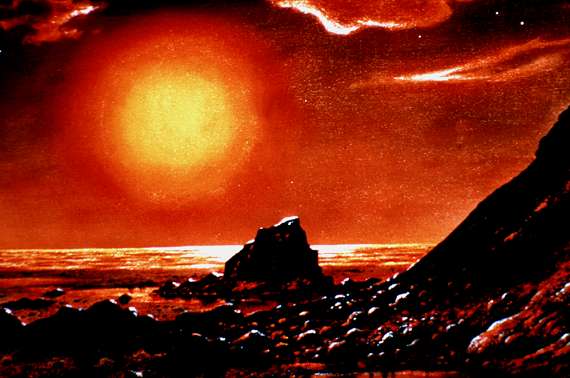
The planets we have so far discovered orbiting other stars were found from the pull their gravity exerts on their parent stars, or from the light they block from their stars when they pass in front of them. If the planets were much farther away, the tiny amount of light they reflect would usually not be visible to us. We are able to see the nearby planets in our skies only because they reflect the light of our local star, the Sun. Notice the size of Earth compared to the giant planets. The orbits of the planets are much more widely separated than shown in this drawing. The Sun, the planets, and some dwarf planets are shown with their sizes drawn to scale. (If a large body consistently produces its own light, it is then called a star.) Later in the book this definition will be modified a bit, but it is perfectly fine for now as you begin your voyage.įigure 1.8 Our Solar Family. A planet is defined as a body of significant size that orbits a star and does not produce its own light. These planets, along with their moons and swarms of smaller bodies such as dwarf planets, make up the solar system ( Figure 1.8). Thus, 110,000 kilometers per hour becomes 66,000 miles per hour.) Because gravity holds us firmly to Earth and there is no resistance to Earth’s motion in the vacuum of space, we participate in this extremely fast-moving trip without being aware of it day to day.Įarth is only one of eight planets that revolve around the Sun. To convert kilometers to miles, just multiply kilometers by 0.6. (If you, like many students, still prefer miles to kilometers, you might find the following trick helpful. If the Sun were reduced to the size of a basketball, Earth would be a small apple seed about 30 meters from the ball.ģ × 10 7 3 × 10 7 seconds) to go around the Sun at our distance to make it around, we must travel at approximately 110,000 kilometers per hour. The diameter of the Sun is about 1.5 million kilometers Earth could fit comfortably inside one of the minor eruptions that occurs on the surface of our star.

Light takes slightly more than 8 minutes to travel 1 astronomical unit, which means the latest news we receive from the Sun is always 8 minutes old.


We call the average Earth–Sun distance an astronomical unit (AU) because, in the early days of astronomy, it was the most important measuring standard. This was not because the astronauts were thinking slowly, but rather because it took the radio waves almost 3 seconds to make the round trip.Įarth revolves around our star, the Sun, which is about 150 million kilometers away-approximately 400 times as far away from us as the Moon. If you’ve seen videos of the Apollo flights to the Moon, you may recall that there was a delay of about 3 seconds between the time Mission Control asked a question and the time the astronauts responded. Light (or radio waves) takes 1.3 seconds to travel between Earth and the Moon. This image shows Earth and the Moon shown to scale for both size and distance. Figure 1.7 Earth and Moon, Drawn to Scale.


 0 kommentar(er)
0 kommentar(er)
